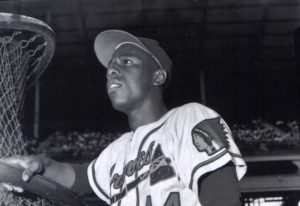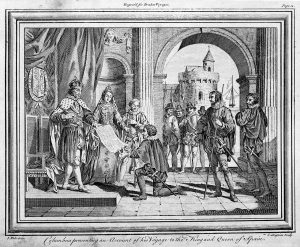If you’re from South Texas or Mexico, it’s very likely that you have at least a small bit of knowledge as to what Mexican Folk Dancing is: the art of dancing in beautifully colored dresses, telling their own story through their dance movements. Mexican Folkloric Dancing is very important in Mexico as it is one of the many ways that the people of Mexico celebrate their culture, independence, and ancestors.
The Mexican Hat Dance is one of the most popular Mexican Folk dances in Mexico. Originating from the state of Jalisco, the Mexican Hat Dance became one of the most popular dances in Mexico and soon made its way to South Texas. Jalisco is not only home to the Mexican Hat Dance, but it is also home to mariachi bands, the China Poblana female and Charro male costumes, and other Jarabe dance forms.1

The Mexican Hat Dance is usually performed by a couple (a man and a woman), where the dancers do not touch each other, but show the courtship between the each other.2 The Mexican Hat Dance, also known as “el Jarabe,” is a dance of flirtation. In the beginning of the dance, the woman is shy and timid, while the man is attentive and persistent. In most versions, the man tosses his sombrero on the floor so that he and the woman can dance around it.3 Most people from Guadalajara (a city in Jalisco) call the Mexican Hat Dance “el Jarabe Tapatio.” Jarabe means a specific mestizo song and dance form, and Tapatío is a term that is used to refer to the people of Guadalajara.4 This is why dancing is such an important art in Mexico. Although there are many forms of el Jarabe (The Mexican Hat Dance), el Jarabe Tapatio is the most important to the people of Jalisco–especially the people of Guadalajara. El Jarabe Tapatio gives a name to the people of Guadalajara and it lets everyone who performs their dance know that they are performing the dance of Guadalajara.
In the early 1900s, Anna Pavlova—a great Russian Ballerina—made the Mexican Hat Dance part of her repertoire and the Mexican Hat Dance became the “National Folk Dance” of Mexico.5 When Anna Pavlova fell in love with the dance and made it part of her repertoire in 1919, the ecstatic Mexican cultural authorities felt that it was an honor and that it could only mean that the Mexican Hat Dance was indeed the most important dance in Mexico. Thus it was decided, since it was such an important dance, that it should be danced wearing the “China Poblana” outfit. The outfit is a beautiful green, wide brimmed skirt with colorful sequence and a coordinating white blouse.6

The Jarabe Tapatío, or the Mexican Hat Dance, is a Mexican folk art that signifies the Mexican identity. Not only does it commemorate a sense of unity throughout the country of Mexico, it also showcases the traditions and culture of Mexico.7 Since its popularity came about during the Mexican Revolution, it brings a sense of cultural identity to the Mexican people: being able to showcase who they are and what they love through the beautiful art of dancing. Dancing in Mexico is a very important part of their culture as they use it to express themselves and to showcase who they are. The beauty and vividness of the dresses and the grace of the dancing are what have captivates audiences around the world.
Today, Mexican Folkloric dances are seen all throughout Mexico and all throughout South Texas. From festivals to basic social gatherings and even in dance competitions; not only is the Mexican Hat Dance seen, but many other forms of Mexican Folk dances are seen all throughout. Even in places like Fiesta, the ten-day long celebration that takes place in downtown San Antonio, citizens see Mexican Folkloric dancing take place all throughout the Fiesta celebration. The Mexican Hat Dance is not just a dance to the people of Mexico, rather, it is a way of showcasing to the rest of the world who the people of Mexico really are.
- Anthony Shay, Choreographic Politics: State Folk Dance Companies, Representation and Power (Middletown, CT: Wesleyan University Press, 2002), 40-41. ↵
- Jose Luis Ovalle, “The Mexican Hat Dance: National Folk Dance of Mexico,” Mexican Dance Company, 2007, http://mexicandancecompany.org/mexican-dance/mexican-hat-dance.html. ↵
- Encyclopedia Britannica, June 2017, s.v. “Jarabe: Mexican Dance.” ↵
- Brenda M. Romero, Dancing Across Borders: Danzas Y Bailes Mexicanos (Urbana and Chicago: University of Illinois Press, 2009), 287. ↵
- Jose Luis Ovalle, “The Mexican Hat Dance: National Folk Dance of Mexico,” Mexican Dance Company, 2007, http://mexicandancecompany.org/mexican-dance/mexican-hat-dance.html. ↵
- Jose Luis Ovalle, “The Mexican Hat Dance: National Folk Dance of Mexico,” Mexican Dance Company, 2007, http://mexicandancecompany.org/mexican-dance/mexican-hat-dance.html. ↵
- Jose Luis Ovalle, “The Mexican Hat Dance: National Folk Dance of Mexico,” Mexican Dance Company, 2007, http://mexicandancecompany.org/mexican-dance/mexican-hat-dance.html. ↵


54 comments
Steven Hale
Being new to San Antonio, and the Southern United States, I have seen some Mexican Folk dancing at Fiesta, but I had no idea about the customs and history you discussed here. The few times I have danced at weddings or other events, there is really nothing else associated with the dance. It is just movement. The photo you shared of the Hat Dance makes both participants look so happy and alive; I would guess the tradition associated with Mexican Folk dancing really makes the experience feel special.
Lamont Traylor
Although “Mexican Hat dance” seems like the appropriate name for this dance, I have a few friends from south Texas and from Mexico who laugh when I bring up the name of the article. They tell me that it’s funny but that that’s not what it is called. None the less it is still a nice and fun tradition to see, and maybe participate in but I would not know from experience because I have not done it.
Bictor Martinez
Being from south Texas myself, I am familiar with the Mexican Hat Dance. My family from Mexico would constantly be asking me if I knew the dance yet, however I never did, but have always enjoyed seeing all the beautiful outfits they wear. After reading this article I now see the importance of the Mexican Hat Dance. I never really knew the significance, but I knew the popularity of it. Now with my knowledge of it, I plan to share it with my family members.
Mariah Garcia
My boyfriend has danced Ballet Folklórico for the past 4 years, and is very familiar with this dance. One thing that is interesting to note is that what is referred as the Mexican Hat Dance, or el Jarabe Tapatio, can come in many different forms, depending on how, where, and by whom it is taught. Different instructors especially those from different regions in Mexico will have similar yet distinct versions of this dance as well as many others.
Gabriela Ochoa
Growing up I was put into classes that taught us this dance and how to do it properly. I never knew the origin of the dance or the dress. I think the dance is really important because it does help us continue the the Mexican culture. To read that someone who wasn’t from Mexico or from the Mexican descent loved the dance and dress and is great and an honor as you said. overall, this is a really great story and great pictures to show the dress colors.
Indhira Mata
Dancing has always been a way people tell their story and share their culture with others. Reading an article about the importance of the well known dance from Mexico shows that other countries loving dancing for the same reason. Growing up I always wanted to be able to learn the dance, but I enjoy seeing it instead. It shows how creative and full of life the Mexican culture is with all the colors and the long skirt. The music is loud and firm like their courage. I enjoyed this article alot.
Maisie Favila
Being from South Texas, this article intrigued me. Though I never heard of the Mexican Hat Dance, I found it to be very interesting and I wonder if my friends from my hometown are familiar with it. The article mentioned Mexican Folkloric dancing and I am more familiar with that then the Hat Dance. From the description, the two dances do seem similar. While I was in Europe, I got to see a Flamenco performance that I believe resembled Mexican Folklore dancing, therefore I feel as if all three dances could be similar. The article helped me gain an insight to more culture that I have yet to experience through my Mexican background.
Rylie Kieny
I had never heard of this dance before reading this article. I think the author does a good job painting an image for the reader of how the dance is supposed to look. I have seen similar dances but I never knew their importance to the people of Mexico. I just thought this was a way to celebrate an occasion and have fun. I like the picture that the author shows because it highlights the beautiful colors of the skirt and its direction correlation to the Mexican culture.
Dylan Sanchez
I have heard of this dance before but never truly looked into the origins and the representation behind it. I’ve always loved the vibrant colors that the women wore in the dances. I always thought that it was just a small fun dance. The meaning behind the dancing is so interesting, like the fact that the man is supposed to come off as a strong and resilient one and the woman is supposed to be shy. The more I think about it, the more it makes sense.
Adrian Cook
The Mexican Hat Dance is something very commonly seen during fiesta season in downtown San Antonio. I never knew what the purpose of the dancing was but now I get a better understanding. It’s amazing how the cultures of Mexico has made it’s way North across the border and still continues to influence different regions of the nation. I would love to learn more about Mexican heritage.